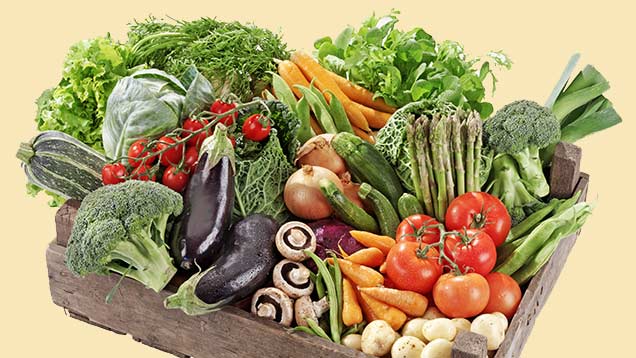Key market facts for anyone considering organic farming
 © Rex
© Rex Organic food and drink is showing signs of recovery, as consumers’ spending power recovers following the recession. These five key points summarise the market’s current position.
Sales are recovering
Between 2008 and 2011 sales fell by almost a quarter, dropping from a peak of £2.1bn to £1.6bn.
Since then, there has been steady recovery, with two successive years of growth. Sales climbed 4% in 2014, according to the Soil Association’s latest market report. This was set against a decline in the overall food and drink market of 1.1%.
The drivers of this growth are online and so-called “box schemes”, such as that run by Abel & Cole. It is being bought about by a young demographic that’s web-savvy, health conscious and concerned about the provenance of food.
See also: Organic conversion if the price is right
Which categories are doing best?
Dairy is the overall top performer, accounting for 27.9% of total organic sales. Branding and increased availability were cited as reasons for its success. It grew some 6.8% in 2014.
It is also a success story in the catering sector. This was worth around £55m in sales in 2014, and milk accounted for about half of that. Headline buyers include McDonald’s and coffee chain Pret A Manger.
Eggs also saw strong sales growth, topping almost 16%. This is a sector which many thought had been killed off during the recession, with all but a hard core of consumers switching out of organic into free range.
Poultrymeat was also noted as an area of strong growth. A representative from Waitrose said it was the top-performing category for organic poultry, with sales increasing 19% last year.
What produce is suffering – and why?
Sales of beef, lamb and pork all declined, as did fruit and vegetables. It’s therefore not entirely surprising that the amount of land in organic production and the number of licenced farmers has also fallen.
Helen Browning, chief executive of the Soil Association, said the challenges that the market had recently faced, along with uncertainty over CAP payments had driven farmers from the sector. This decline continued in 2014, with the amount of land either registered organic or in conversion falling 5% to 575,349ha.
The number of farmers has also fallen, some 6.4%, to 6,072.
Ms Browning said she expected this decline to reverse in 2015, as confidence and a favourable CAP would encourage farmers to convert.
“Organic can be more profitable, and is actually more stable in an increasingly volatile farming environment.
“Anyone considering converting should firstly make sure you know where your market is and secondly, that you feel you will enjoy organic production.”
Did someone say more profitable?
Yes. The Soil Association says it has analysed Defra’s annual Farm Business Study, and found organic earnings outstripped those of their conventional counterparts between 2006-2013.
It put this advantage at between £26-82/ha over that seven-year period.
What about further afield?
Growth appears far stronger in other European states: Germany was put at 7%, France 9% and Italy 6%.
Ms Browning suggested organic was seen as “more normal” in those countries, and policy support had aided growth. She called for the same in the UK, particularly in public procurement.
She added that the opportunities for export further afield remained great, with the US expanding an already relatively mature market and China just beginning to demand more organic.
